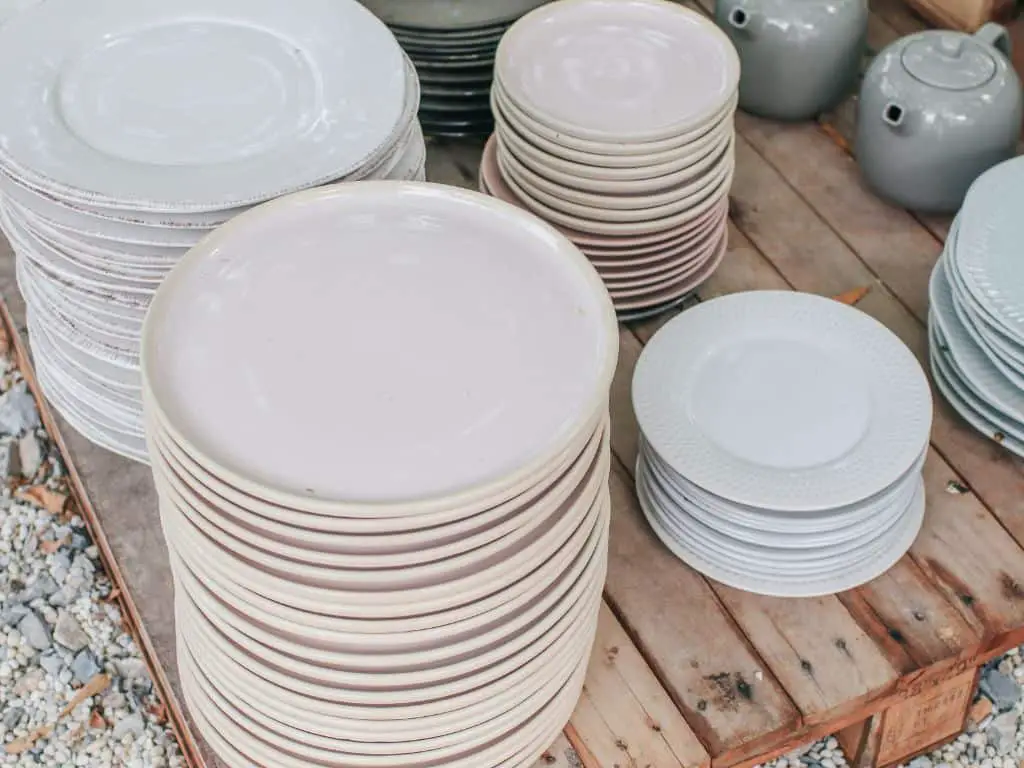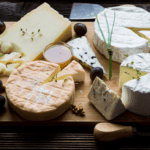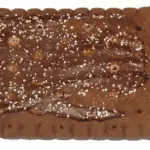Plates are a ubiquitous part of our daily lives. These round, flat dishes hold our food while we eat. But plates weren’t always a given at mealtimes. When and how did plates first come into use?
Plates were invented during the Neolithic period, over 10,000 years ago. Ancient Greeks, Romans and the Middle Ages used variants of plates. Porcelain plates emerged in China during Tang Dynasty (618-907 AD), reaching Europe by the 18th century. Mass production started in the 19th century.

Early History of Plates
The precursors to plates emerged in ancient cultures across the world. People ate off various makeshift, flat surfaces, including:
- Leaves – Banana, palm, and other large leaves served as natural plates
- Bread – Slices of bread called trenchers were used in Medieval Europe
- Wood – Bowls and platters carved from wood were common tableware
Ceramic plates originated during the Neolithic period when pottery was first developed. Flat pottery vessels to serve food date back over 10,000 years in China and other early pottery-making cultures.
Plates in Ancient Greece and Rome
The ancient Greeks ate from terra cotta plates of different shapes and sizes. Round plates were used for individual servings, while larger squarish plates held communal dishes for diners to share.
In ancient Rome, flat dishes called patinae were common. Wealthy Romans used plates made of precious metals like silver and gold. Pottery plates were popular among lower classes.
Middle Ages – Renaissance
With the collapse of Rome, plates fell out of fashion in Europe. Food was served on thick slabs of stale bread called trenchers.
Wooden plates and bowls reemerged during the Middle Ages. The 14th century saw a return to flat metal and pottery plates among the elite.
Renaissance nobles and royalty used plates of pewter and tin-glazed earthenware. By the 1500s, the trencher had gone out of use in favor of proper plates.
Porcelain Plates Emerge
Porcelain plates first appeared in China as early as the Tang Dynasty (618-907 AD). From there, porcelain plate-making spread to Korea and Japan. Porcelain plates didn’t reach Europe until the 18th century.
Europe’s early porcelain plates copied decorations like blue-and-white patterns from Chinese export porcelain. By the 1700s, European potteries began producing their own innovative porcelain dishware.
Plates for the Masses
While the rich had long used plates, it wasn’t until the 19th century that plates became everyday dishware for regular people.
The Industrial Revolution led to advancements in pottery and porcelain production. Plates could be mass-produced affordably using:
- Transfer printing – Efficient way to decorate plates
- Molds – Shaped plates into identical forms
- Assembly line production
This allowed working-class families to finally own their own set of plates. Plain white porcelain plates were the typical family dinnerware by the mid 1800s.
Types of Plates
Many types of plates have emerged over the centuries tailored to different foods and meal customs. Some common plates today include:
- Dinner plate – The standard 9-11 inch plate for most meals
- Salad plate – Small 7-8 inch plate for individual salads
- Bread and butter plate – 6 inch plate for bread or side dishes
- Dessert plate – Midsize 8 inch plate for sweets
- Appetizer plate – To hold first course servings
- Soup bowl – Deep rimmed plate for soup
Plates come in every color and pattern imaginable today. They’re made from ceramics, glass, plastic, and even paper pulp.
The Future of Plates
Plates have come a long way from leaves and slabs of bread! Dishware continues evolving along with dining habits and technology.
Some modern plate innovations include:
- Plates with built-in dividers
- Plates with antibacterial materials
- Fast-food combo plates molded as one piece
- Edible plates made from biscuits, grains, and vegetables
While plates themselves may change, these handy vessels for holding our meals are sure to remain essential tableware. From Neolithic pottery to 3D-printed dishes, plates make mealtime possible!
































